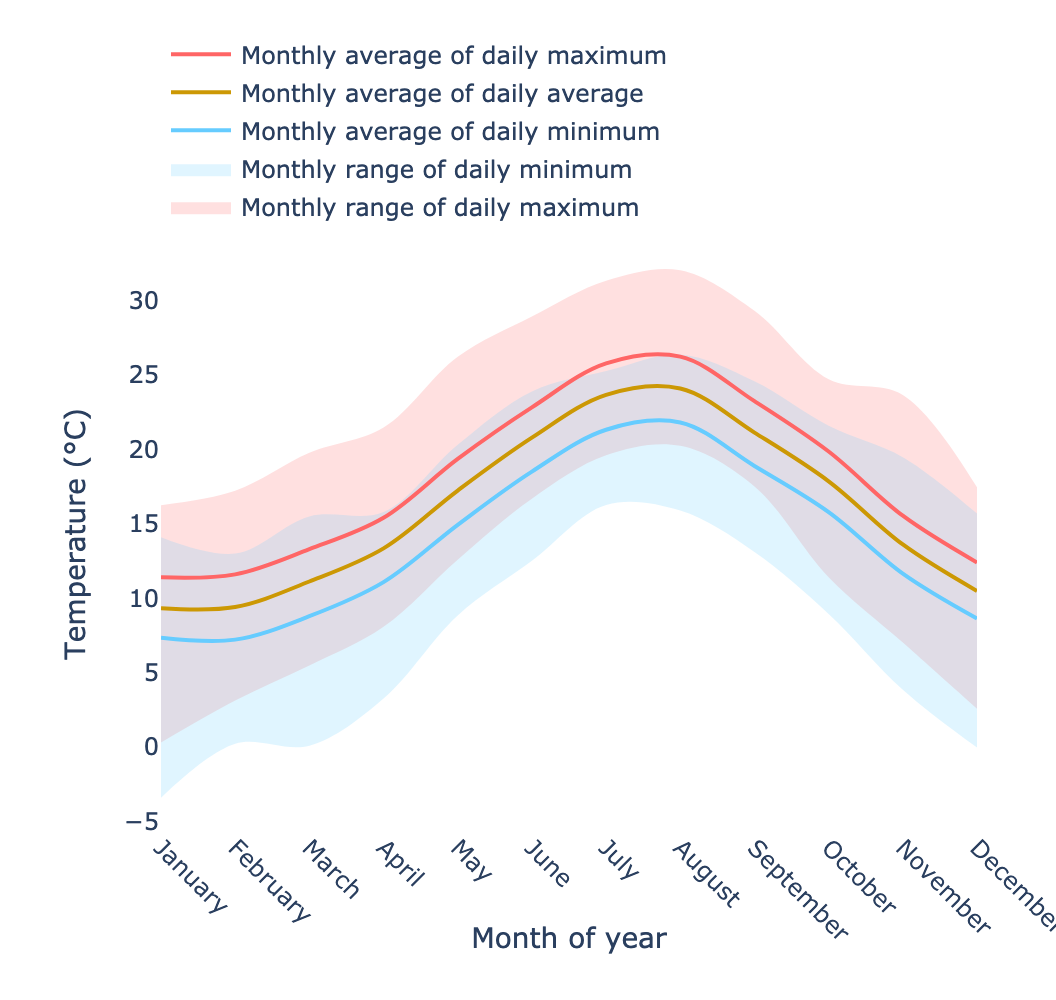Introduction
The ERA5 explorer is a web application for exploring historical climate statistics through an interactive map interface, designed and built using the Copernicus Climate Change Service (C3S) Climate Data Store (CDS) Toolbox. This page documents the application, the dataset used and how the statistics are generated.
Dataset
All of the climate statistics generated and visualised by the application are derived from the ERA5 reanalysis dataset, which is available to download and use under the Copernicus licence from the CDS catalogue. The application extracts global ERA5 data from the period from 1979-2018 for the following variables
- Air temperature at 2m at three-hourly intervals (00, 03, 06, 09, 12, 15, 18 and 21 UTC)
- Horizontal component of wind at 10m monthly averages
- Vertical component of wind at 10m monthly averages
- Instantaneous 10m wind gust monthly averages
- Mean total precipitation rate monthly averages.
You can find documentation on the ERA5 dataset here. of ERA5
The information presented by this application for specific cities is based on the nearest grid point to the given city in the ERA5 reanalysis. It is not based on site-specific observations.
Long-term average (reference period)
Climatologies and temperature anomalies in this application have been calculated over the long-term average period of 1981-2010, which is the current WMO climatological standard for long-term averages.
Application
Interactive map
The ERA5 explorer generates an interactive map interface which visualises fields of global average surface temperature, precipitation and wind speed. These averages are calculated slightly differently for each variable:
- Average temperature - the mean of all temperature values extracted from ERA5 at each grid point over the 1981-2010 reference period.
- Average yearly precipitation total - the mean of all precipitation rate values extracted from ERA5 at each grid point over the 1981-2010 reference period, multiplied by 3.14x1010 (number of seconds in a year (3.14x107) multiplied by number of milimetres in a metre (1000) - see Precipitation units below).
Average wind speed - the mean of all 10m wind speed values extracted from ERA5 at each grid point over the 1981-2010 reference period.
The interactive map also includes a search box for generating climate breakdowns for any selected city from around the world.
Climate breakdown panel
When a user searches for a location in the interactive map described above, the application will generate a breakdown of climate statistics, which are displayed in a pop-up panel on the right-hand side of the screen. The information provided in this panel is broken down into different sections, which can be accessed by selecting drop-down options.
Climate classification
The first piece of information provided for each selected city is its Köppen climate classification. This classification system divides climates into five main groups based on seasonal temperature and precipitation patterns. The groups used by the ERA5 explorer are tropical, dry, temperate, continental and polar, and the criteria for attaining each classification is provided in the table below:








